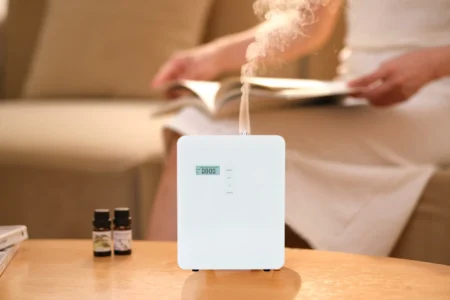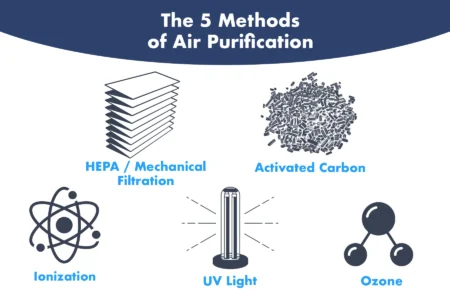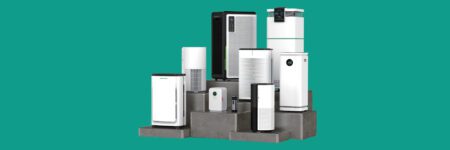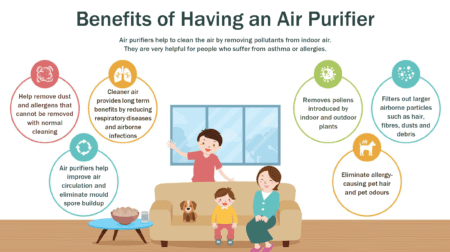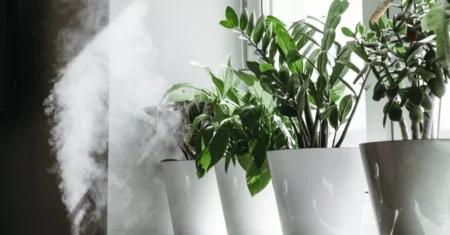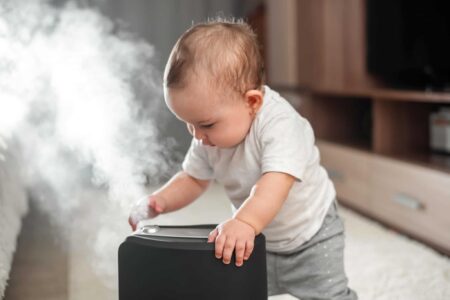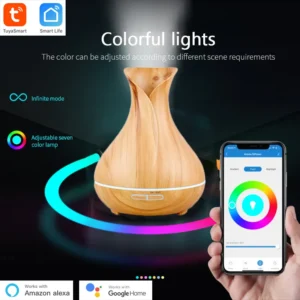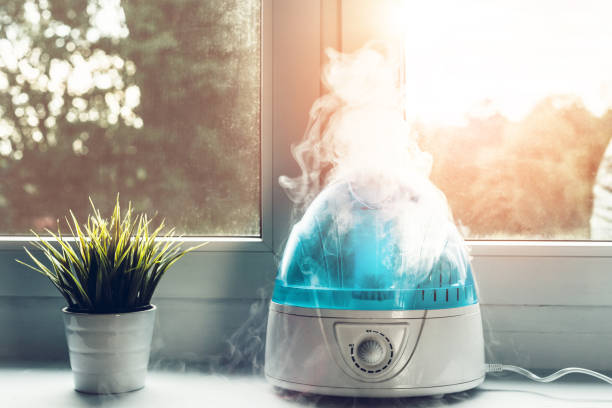

Choosing the Right Humidifier for Your Home: A Complete Buying Guide
Confused about which the right humidifier to buy for your home? This comprehensive buying guide covers everything you need to know to make an informed decision. From different types of humidifiers to key features and maintenance tips, discover the perfect solution to create a healthy and comfortable indoor environment.
Introduction:
Maintaining a healthy home environment goes beyond just keeping it clean and organized. The humidity level plays a crucial role in ensuring optimal comfort for you and your family. This is where a humidifier comes in. Whether you’re dealing with dry air in the winter months or seeking relief from allergy symptoms, a humidifier can help create a balanced and pleasant atmosphere inside your home.
In this comprehensive buying guide, we will walk you through everything you need to know to choose the right humidifier. The effects of humidity to exploring different types of humidifiers, we’ll cover the key factors and features to consider. Additionally, we’ll provide helpful maintenance tips to keep your humidifier running smoothly and efficiently.
By the end of this guide, you’ll have the knowledge and confidence to make an decision and find the perfect humidifier to meet your specific needs. So, let’s dive in and discover how to create a healthy and comfortable indoor environment through proper humidity control.
Understanding Humidity and Its Effects:
It’s important to understand what humidity is and how it affects our daily lives. Humidity refers to the amount of moisture present in the air. It plays a significant role in maintaining our respiratory health, skin hydration, and overall comfort.
Low humidity levels can lead to dry skin, irritated nasal passages, and increased susceptibility to respiratory infections. Excessive humidity can create an environment favorable for mold and mildew growth, which can trigger allergies and respiratory issues.
By using a humidifier, you can regulate the humidity levels in your home, providing numerous benefits. However, it’s essential to find the right type of humidifier that suits your specific requirements. Let’s explore the different types of humidifiers available in the market and their unique features.
Types of Humidifiers:
Humidifiers come in various types, each employing different mechanisms to add moisture to the air. The four most common types are cool mist humidifiers, warm mist humidifiers, ultrasonic humidifiers, and evaporative humidifiers. Understanding their functioning and characteristics will help you determine which type is best suited for your home.
-
Cool Mist Humidifiers:
Cool mist humidifiers, also known as evaporator or wick humidifiers, utilize a fan to blow air over a wet wick. The water evaporates from the filter, releasing cool mist into the air. These humidifiers are effective at increasing humidity levels while also helping to cool the room slightly. They are generally considered safe for households with children and pets.
One advantage of cool mist humidifiers is that they don’t require heating the water, making them more energy-efficient than warm mist humidifiers. They are also suitable for warmer climates or during the summer season when cooling the air is desirable. Cool mist humidifiers come in both tabletop and console models, offering a range of coverage areas to accommodate different room sizes.
Choosing a cool mist humidifier, consider factors such as the size of the water tank, ease of cleaning, and the presence of additional features like adjustable mist settings or a built-in humidistat. By assessing your specific needs, you can find the ideal cool mist humidifier for your home.
-
Warm Mist Humidifiers:
Warm mist humidifiers, as the name suggests, emit warm mist into the air by heating the water before releasing it. These humidifiers typically include a heating element that boils the water, killing potential bacteria and impurities. The warm mist produced is comforting during cold seasons and can help alleviate congestion and respiratory discomfort.
One of the advantages of warm mist humidifiers is their ability to create a soothing environment, making them popular for bedrooms and nurseries. They are also generally quieter compared to cool mist humidifiers since they lack a fan. However, it’s important to note that the heating element can pose a risk, and extra caution is required, especially when children or pets are present.
When selecting a warm mist humidifier, consider the tank capacity, ease of cleaning, safety features such as automatic shut-off, and the option for adjustable humidity settings. With the right warm mist humidifier, you can enjoy the comforting warmth and improved humidity in your home.
-
Ultrasonic Humidifiers:
Ultrasonic humidifiers utilize high-frequency vibrations to break water into tiny droplets, which are then released as a cool mist into the air. These humidifiers are known for their near-silent operation, making them an excellent choice for bedrooms, offices, or other quiet spaces where noise may be a concern.
The ultrasonic technology used in these humidifiers is highly efficient, producing a fine mist that quickly disperses throughout the room. They are available in both cool mist and warm mist variations, providing flexibility based on your preferences and needs. Ultrasonic humidifiers often feature additional settings like adjustable mist output and built-in timers, allowing you to customize the humidity level according to your comfort.
When choosing an ultrasonic humidifier, consider the tank capacity, ease of cleaning, presence of a demineralization cartridge or filter to prevent mineral buildup, and the availability of additional features such as night lights or aromatherapy options. By selecting the right ultrasonic humidifier, you can enjoy the benefits of efficient and quiet operation in your home.
-
Evaporative Humidifiers:
Evaporative humidifiers work by blowing air through a moistened wick or filter, increasing the humidity in the room. They operate without the need for heating the water, making them energy-efficient and safe to use around children and pets. Evaporative humidifiers are known for their ability to add moisture to the air while simultaneously filtering out impurities, ensuring cleaner indoor air quality.
These humidifiers are available in various sizes and styles, ranging from tabletop models suitable for small rooms to console models designed to humidify larger spaces. They often feature adjustable humidity controls, multiple fan speeds, and indicators for filter replacement or water refill. Evaporative humidifiers are a popular choice for those seeking a balance between performance, energy efficiency, and ease of maintenance.
When considering an evaporator humidifier, factors such as the coverage area, tank capacity, ease of filter replacement, and overall maintenance requirements should be taken into account. By selecting the right evaporator humidifier, you can enjoy improved indoor air quality and a comfortable living environment.
Factors to Consider When Choosing a Humidifier:
While understanding the different types of humidifiers is important, several factors should be considered to ensure you select the most suitable one for your home. Evaluating these factors will help you find a humidifier that aligns with your specific needs, room size, and personal preferences. Let’s explore the key factors to consider when choosing a humidifier:
-
Room Size and Coverage Area:
When selecting a humidifier, it’s crucial to consider the size of the room or area you intend to humidify. Humidifiers come with different coverage capacities, ranging from small units suitable for single rooms to larger models designed to humidify entire floors or even multiple rooms.
To determine the appropriate humidifier size for your space, consider the square footage and ceiling height. Manufacturers typically provide guidelines regarding the maximum area a humidifier can effectively cover. Choosing a humidifier that matches your room size ensures optimal performance and efficient humidity distribution.
-
Humidistat and Humidity Control:
A humidistat is a built-in device that measures and controls the humidity level in the room. Humidifiers with humidistats allow you to set and maintain your desired humidity level automatically. This feature is particularly beneficial for those who want precise control over the humidity in their homes.
Opting for a humidifier with adjustable humidity controls ensures that you can customize the moisture level according to your comfort and health needs. Some models even offer digital displays or integrated hygrometers to provide real-time humidity readings, allowing you to monitor and adjust humidity levels with ease.
-
Noise Level:
Humidifiers that operate quietly are ideal, especially if you plan to use them in bedrooms or other areas where noise may be disruptive. Consider models that specifically advertise low noise levels or mention whisper-quiet operation.
Different humidifier types produce varying levels of noise. For example, ultrasonic humidifiers are known for their silent operation, while evaporative and warm mist humidifiers may generate some noise due to the presence of fans or boiling water. If noise is a concern, prioritize selecting a humidifier that ensures a peaceful and undisturbed environment.
-
Ease of Use and Maintenance:
Humidifiers should be user-friendly, allowing for easy setup, operation, and maintenance. Consider features such as intuitive controls, easily accessible water tanks, and hassle-free filter replacement or cleaning procedures.
Some humidifiers have removable tanks that can be refilled at the sink, while others require filling through the top or bottom of the unit. Similarly, certain models offer dishwasher-safe components or filterless designs, simplifying the cleaning process.
Prioritize selecting a humidifier that suits your lifestyle and preferences in terms of ease of use and maintenance requirements. A humidifier that is simple to operate and maintain will ensure that you consistently enjoy the benefits of proper humidity levels without added stress or inconvenience.
-
Safety Features:
Safety should always be a top consideration when selecting any household appliance, including humidifiers. Look for humidifiers with built-in safety features to provide peace of mind, particularly if you have children or pets at home.
Common safety features include automatic shut-off, which turns off the humidifier when the water tank is empty, preventing the unit from running dry and potentially causing damage. Some humidifiers also incorporate cool-touch surfaces, reducing the risk of accidental burns when touched.
Ensure that the humidifier you choose meets recognized safety standards and regulations. Reading customer reviews and checking for safety certifications can also provide insight into the overall safety of a particular humidifier model.
-
Energy Efficiency:
Energy efficiency is an important factor to consider when selecting a humidifier, as it can impact both the environment and your utility bills. Look for humidifiers that are designed to be energy-efficient, utilizing minimal electricity or water consumption.
Certain humidifiers have energy-saving features, such as auto-adjusting fan speeds or timers that automatically turn off the unit after a specified duration. These features can help conserve energy and ensure that the humidifier operates efficiently without unnecessary power consumption.
Choosing an energy-efficient humidifier not only helps reduce your environmental footprint but also contributes to cost savings in the long run.
-
Additional Features:
Humidifiers may come with various additional features that can enhance convenience and customization. While not essential, these features can provide added value depending on your preferences. Some common additional features to consider include:
- Adjustable mist settings: The ability to control the output of moisture, allowing you to customize the humidity level based on your comfort preferences.
- Automatic timers: Set specific operating durations or schedules to ensure the humidifier operates when needed and conserves energy when not in use.
- Aromatherapy compatibility: Some humidifiers include built-in aromatherapy compartments or trays, allowing you to add essential oils for a pleasant and soothing fragrance in the air.
- Night lights: Ideal for bedrooms or nurseries, humidifiers with integrated night lights can provide a soft and comforting glow during the night, eliminating the need for additional lighting.
By considering these additional features, you can find a humidifier that aligns with your lifestyle and enhances your overall experience.
Conclusion:
Choosing the right humidifier for your home is crucial in maintaining a comfortable and healthy indoor environment. By understanding the effects of humidity, exploring different types of humidifiers, and evaluating key factors such as room size, humidity control, noise level, ease of use and maintenance, safety features, energy efficiency, and additional features, you can make an informed decision.
Remember to consider your specific needs, preferences, and any unique requirements of your household. Reading customer reviews and comparing different models can also provide valuable insights into the performance and reliability of various humidifiers.
Investing in a high-quality humidifier will not only help you combat dry air, allergies, and respiratory issues but also contribute to overall well-being and comfort for you and your family. Enjoy the benefits of balanced humidity levels and create a healthy living space with the perfect humidifier for your home.
Breath Easy: 7 Must-Ask Questions When Buying an Air Purifier for Your Home or Office

